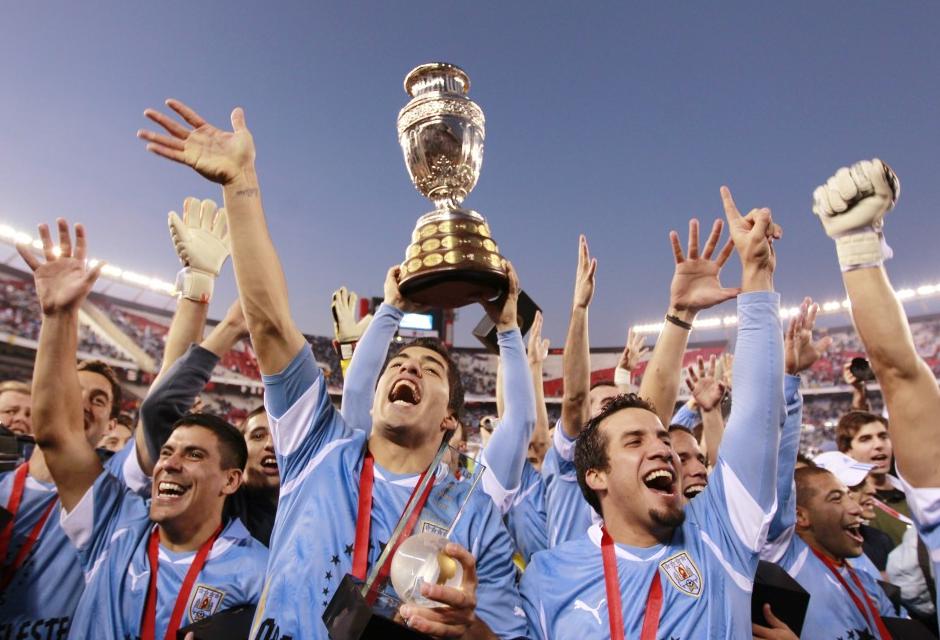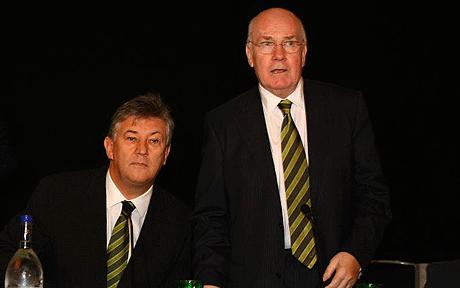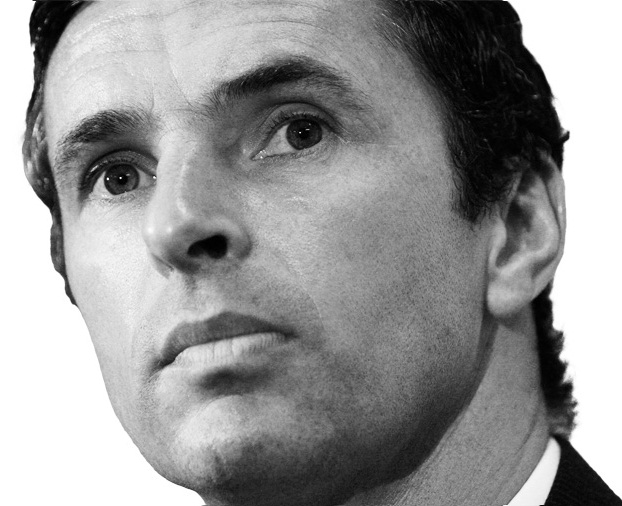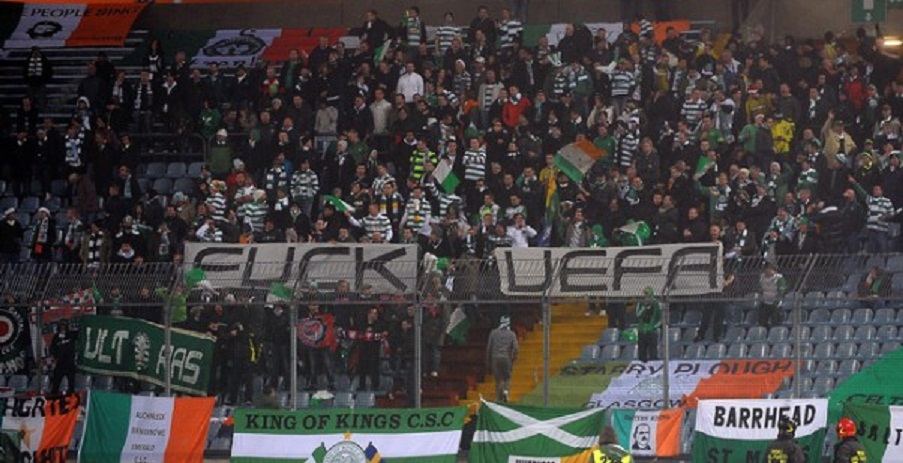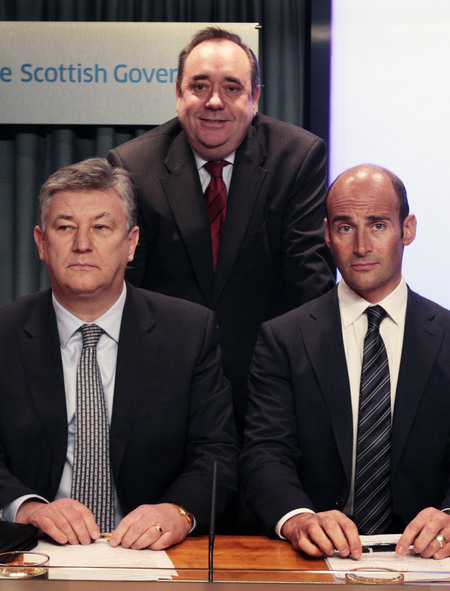Like Argentina and Brazil, Chile have changed their manager since the World Cup of 2010, though their transition has been far smoother than that of ‘the big two’. Their new coach, Claudio Borghi, has reiterated that he will adhere to Marcelo Bielsa’s successful tactical approach (a formation of 3-3-1-3, pressing the opposition high up the pitch) and has largely picked the same players. The key players of the team such as Alexis Sanchez and Arturo Vidal are still fairly young so it could be expected that Chile will be even better for the World Cup in 3 years time, however they may never have a better chance of winning a major competition as they had this year. They had a talented, attacking team and a huge Chilean travelling support backing them at every stadium across Argentina. Chile will still expect to qualify for the next World Cup, but I have a feeling that it will be more difficult than their public realise, as teams that did not qualify for the last World Cup, such as Peru, Venezuela and Colombia all look far better than before.
To me it looks like Colombia are improving. The current team may not yet have the same quality of the early 90’s team of Valderrama, Rincon, Asprilla and Escobar, but they are steadily getting better and after a decade or so of mediocrity they are looking impressive again. Of their 4 games, they were average in two and excellent in the other two. The general response in Colombia has been that they were disappointed not to have at least reached the semi-finals, but that the team looks good again. Probably the most encouraging thing is that the two obvious weaknesses (the goalkeeping and the lack of creativity) will be easily solved when two keys players, David Ospina and Giovanni Moreno, return from injury. Ospina is a very talented young goalkeeper whom I’d expect to move on from Nice to a more high profile European club in the course of the next year or two. The other key player, Giovanni Moreno, has been injured for the past 5 months or so-when he recuperates he’ll be an excellent playmaker for Colombia. We’ve mentioned him frequently on Celtic Underground. Since then Racing signed him for £2m in 2009 and rejected a bid for £11m in 2010. The boy is a genius, my favourite player in the world to watch. For all of Colombia’s energy and enthusiasm, they at times lacked a playmaker to control the tempo of the game, to occasionally slow it right down, provide a bit of composure and to put ‘their foot on the ball’, to know when to retain the ball, make the opposition chase, creating gaps in the opposition midfield and defence. Moreno has these qualities as well as the passing ability and vision to exploit the openings for the attacking runs of Zuniga, Armero, Ramos and of course Falcao. Giovanni Moreno will be the number 10 for Colombia and I’d expect him to take them to another level. Look out for him.
For me, the biggest surprise of the competition was Peru reaching the semi-finals following a dismal world cup qualification campaign, finishing last…yes, even behind Bolivia. Jose Guerrero and Juan Vargas excelled on the counter-attack, but you’d expect that as they’ve both been quality attacking players for the past 3 years or so. The major change has been the organisation of the team and the apparent increase in morale, confidence and willingness to work that has been credited to their new manager, Sergio Markarian. It would surprise me if they qualified for the forthcoming World Cup, but with Brazil already qualified as hosts, there will be one more space available for Conmebol. If Markarian can organise them well at the back and Guerrero, Farfan and Vargas can consistently produce something in attack then they will have an outside chance.
Ecuador, like Argentina and Brazil are in transition. The most successful generation are coming to an end and whilst they may not have a large amount of quality players available to Argentina or Brazil, at least a couple of young boys look very good. Felipe Caicedo is fairly well-known by now. He was an absolute steal for Levante-they got him on loan from Manchester City with a buy-out clause of less than £1m that they have obviously now taken up. Almost immeadiately they sold him onto Lokomotiv Moscow for £5m. He is so big and powerful that like Adriano a few years ago he reminds me of a 15 year old playing against 12 year olds in a school playground-It seems near impossible to push him off the ball. Quite often he shows a very good first touch to go with an incredibly powerful shot. With his heavyweight boxer’s physique, he is a good foil for Crisitan Benitez, once linked with Celtic. Unlike Caicedo, Benitez has not improved at all in the last few years. He seems to be the same player that he was when I first saw him five years ago-lightening quick, industrious, a few nice touches and he absolutely chokes in front of goal.
The most impressive thing for me about Ecuador was the emergence of a young centre back, Fricson Erazo. It has been years since I’ve seen a centre-back with such a good range of passing and composure on the ball. He is about 6’3, quick and was anticipating and reading the game very well. He intercepted many balls and cut out potentially dangerous situations on a number of occasions. In possession, he was elegant, could stroll past opposition players and would always find a teammate with a good pass. His tournament was not without flaws-against Brazil he allowed Pato to nip in front of him for a near-post headed goal, but generally he was excellent. With good coaching I’d expect him to be a very high quality centre back in European football within a couple of years. Erazo is still playing in Ecuador for El Nacional, not even one of the biggest clubs there. Lazio are sniffing around, as are clubs from Holland, the Ukraine and Russia. The other day an investment company tried to buy his rights with the view of sending him to Europe and recouping a huge sell-on fee on his next transfer. Apparently, their offer wasn’t sufficient. It won’t be long till he moves over to Europe-the boy has so much potential it’s unreal.
The story of Venezuelan football is one of the most interesting, yet conversely one of the least reported and discussed. To begin with, unlike the rest of the continent, football is not the most popular sport in the country. Baseball dominates here, as would soon become apparent to any visitor that watched TV, read the local papers or listened to the radio. The local baseball fixtures attract big crowds and create atmospheres more akin to partisan football crowds rather than the more prosaic North American baseball fan.
When Hugo Chavez was growing up, his dream was similar to most young Venezuelan boys; to the make it to the big leagues in the States. Well, he has had to make do with being President of his country and interestingly it has been under his government that football has undergone a huge improvement. Like most socialist states, an emphasis has been put on sporting success. With regards to football, the Chavez government won the bid for the 2007 Copa America with the promise of building new stadia and high quality training facilities across the country. This investment in facilities helped revive the competition that was being played in increasingly dilapidated stadia, but more significantly the investment has also created a legacy through the infrastructure of high quality stadia and academies in every region of the country. In the 2007 tournament Venezuela recorded only their second ever victory in Copa America history, their first being 40 years prior. Since then, they have performed respectably in World Cup qualifying (despite not reaching South Africa) as they finished just two points behind Uruguay. Each year their clubs are becoming more prominent in continental competitions, progressing in the Copa Libertadores and Suramericana and last month the national team reached the semi-finals of the Copa America for the first time, drawing with both Brazil and Paraguay and beating Boliva and Chile in the process; a great achievement.
Football in the country is definitely improving and will surely continue to do so with the aforementioned government support and high quality infrastructure in place. Before, Juan Arango (once linked with Celtic) was to be the only real quality player in the squad, struggling to be on the same wavelength as his less talented compatriots. Now though, they are producing high quality young players to accompany him-Rondon and Rincon being the most prominent. Las Palmas brought over Salomon Rondon from his Venezuelan club Aragua for nothing. 2 years later they sold him onto Malaga for about £2.75m and last season he was Malaga’s top scorer in La Liga with 14 goals. He is just 23, is a tall, strong running forward with a good touch and close control and a proven goal scorer in the world’s best league, how much would he be worth? £12m plus?
The story of Tomas Rincon is similar to that of Rondon-both being 23 and having made the breakthrough in European football this year. In addition, both of them were bought from Venezuelan clubs at very little cost and are now many times more. In the case of Tomas Rincon, Hamburg signed him 2 years ago for less than £300,000 from Deportivo Tachira before loaning him back there for one season for his development. Last season he featured prominently in the Hamburg midfield. He is a very tidy central midfielder, similar to Paul Lambert, helping the continuity of his team with the ability to break forward occasionally to support the attacking players. There was a moment in the game against Brazil where he did two quick ‘dragbacks’ on the ball, before bursting past both Lucas Leiva and Ramires, leaving them for dead.
Whilst it’s good to see to young boys developing and succeeding in Europe’s best leagues, the most intriguing thing for me is that their cases and success is symptomatic of the continuing improvement of Venezuelan football, something that will surely continue with the high quality infrastructure in place. This, in addition to the low transfer fees involved, will surely see European clubs monitoring Venezuelan football and scouting their players.
It is difficult to know what to write about Bolivia, so I’ll be brief- as you’ll know they are relatively successful when playing at high altitude in La Paz, but really they lack quality, to be honest. It’s significant that their best player, Moreno, was brought up through Brazilian League football. At times Bolivia can be organised, close down teams well, but they don’t have much quality when in possession of the ball. More interesting and talented amongst the also-rans of the tournament this year was Costa Rica. They effectively entered an under-23 team, as their coach La Volpe wanted to concentrate on the Concacaf Gold Cup. However, in the Copa America they actually looked pretty decent, despite their youthful team. The Argentinian media highlighted the play of Joel Campbell, a quick left-sided forward who seemed to link up well the midfield and attack. He looks to be a decent prospect. After the tournament Arsenal agreed a £1m fee with his Costa Rican club Sarprissa, but Campbell reportedly rejected the wages being offered. It was rumoured that Manchester United were also interested, but to be honest although he looks talented, he is also quite raw, in that he would often take the wrong option when on the ball. I personally think he’d benefit from playing in a less demanding league where he could develop for a couple of years. I suspect that he might get lost at Arsenal or Manchester United, but what do I know?
Earlier this year, I watched Costa Rica’s full team give Argentina a 0-0 hammering in San Juan. Cristian Bolanos of Copenhagen was superb-he tore Argentina apart all night. No doubt there are a lot of European clubs watching the guy. It was a pity that neither him nor Bryan Ruiz of Twente were selected for the Copa America, as it would have been interesting to see them play against Argentina again. Like Costa Rica, Mexico, also picked an under-23 team. Only Giovanni dos Santos (still only 22) was the most prominent senior player to be selected. Everytime I see dos Santos (still only 22) play for Mexico he impresses me, yet he seems to be forever on loan-first at Ipswich, then Galatasaray and last season at Santander. Mexico’s under-17’s won the youth World Cup this year, so it appears as though they are continuing to gradually improve. Though, for a football obsessed country of 110 million, it is about time that they reached a decent level. The last two countries that we will look at Paraguay and Uruguay (of 6.3 million and 3.3 million inhabitants respectively) should put Mexico to shame.
I was quite surprised at the reaction of our media to Paraguay knocking out Brazil on penalties-it really wasn’t a shock at all, despite what the papers and websites were claiming. Perhaps if football journalists based their analysis on recent form and tactics rather than Nike adverts and youtube clips then they wouldn’t be in their continual state of shock. It was as though they hadn’t noticed that just one point had separated the two teams over the 18 game marathon that is Conmebol World Cup qualifying. Or that they had forgotten that Paraguay had, like Brazil, reached the quarter-finals of the last World Cup. Or even that just a few days earlier, they drawn against each other in a group stage in a game that Paraguay had dominated.
As for the actual match, Brazil were incapable of getting the ball past Paraguay’s herioc goalkeeper, Justo Villar. Even in the penalty shoot-out, Brazil missed all four attempts! After an excellent tournament, Villar was officially named as the best goalkeeper of the Copa America. An experienced international goalkeeper who was playing in La Liga for Valladolid-were Celtic even aware that Villar was available on a free transfer? I suspect not. In any case, Estudiantes of Argentina were quicker than any European club; they went straight to his hotel with a contract and signed him.
Paraguay’s success has been built upon an excellent work ethic going throughout the whole team with the midfielders not being overly elaborate whilst in possession. The basic tactical approach seems to be highly pressuring their opponents, closing them down quickly, limiting space, with an evident willingness to concede free kicks to the opposition, breaking their rhythm and having confidence that their defence can repel any set pieces. When in possession, they are more direct than most Latin teams. Paraguay have quality forward players in Barrios and Valdez and a very good outlet on the left wing with Marcelo Estigarriba. After the Scottish season had finished but whilst the Argentinian season was still ongoing, McCoist flew down to Argentina to watch some games, apparently looking at Estigarriba playing for Newell’s Old Boys. He was very impressive in the Copa America, as he was throughout the Argentinian season for Newell’s. Estigarriba has very good close control, a decent burst a speed, an excellent left-footed delivery and he is like a lot of Paraguayn players in that he is tenacious and physical. In their group game against Brazil he absolutely destroyed Daniel Alves, to the extent that Alves was dropped for the next game-also against Paraguay. In the quarters Estigarriba played admirably against Maicon, skinned him a couple of times and forced Maicon to foul him, leading to a booking. However, Maicon didn’t go forward as much as Alves had done limiting the space Estigarriba had to run into and quelling much of Paraguay’s attack-it was a good tactical decision by Brazil’s manager, Menezes. Paraguay offered far less creativity and attacking threat. On the other side of the pitch, Ivan Piris the marauding right back for Paraguay will be a great buy for Sao Paulo. They picked him up after an exceptional tournament, having also excelled in the Paraguayan league and Copa Libertadores for Cerro Porteno. Only 22, I’d expect Sao Paulo to sell him to a European club for double or treble the £2.5m fee that they spent to sign him in a year or so.
Uruguay are actually quite similar to Paraguay in their tactical approach, but while the Paraguayans are pretty good, Uruguay are a much higher level altogether. In every area, Uruguay have better quality outfield players. At the back, Lugano and Godin are truly world class. Yet it says much for the ability of young Sebastian Coates, that Uruguay didn’t miss the injured Godin at all. We mentioned the Coates a year ago in our Uruguayan Scouting Report. What we said then, is applicable now-he is 6’4, imposing and dominates both areas But what sets him apart from most physical defenders is that he has the touch of a playmaker. From defence he can stroll forward, play ‘one-twos’, he has a good passing range and can help initiate attacks. Earlier this year, Porto and Sao Paulo were attempting to be trying to sign him for around £3m. Since the Copa America, where he was named as young player of the tournament, Nacional his club in Uruguay are sensing they can get a much higher fee, £16m being mentioned in the Guardian with Liverpool, Manchester City and Arsenal apparently interested. I’d be amazed if Nacional managed to get anywhere close to that fee, but it would not surprise me if he goes for that sort of money after a couple of seasonsin European football.
At full back, Uruguay have Martin Caceres on the left and Maxi Pereira at right-back, with Jorge Fucile of Porto a quality replacement for either. I don’t think I’ve ever seen a player with such good stamina as Pereira-it’s remarkable. He seems to excel in the epic games that Uruguay are frequently involved in (v Ghana, Holland, Argentina etc), with his seemingly tireless running. In midfield, Uruguay definitely lack creativity and someone who can control the tempo of the game. Nicolas Lodeiro who Ajax signed last year is talented, but hasn’t yet progressed from being promising to dominating games, though he is still only 22. The real quality of the Uruguayan midfield is in Egidio Arevalo Rios. For me he is the best destructive midfielder in the world. I say destructive and not defensive because you could validly argue in favour of Yaya Toure or Sergio Busquets as they play fairly deep in midfield, but in a more of a deep playmaker role, retaining the ball and initiating attacks. This is not Rios. His attributes are closing down the opposition, harassing and bullying them, blocking out space and passes through his superb defensive positioning, dispossessing his opponents and playing it to more creative forward players with quick, sharp passes. He is like Neil Lennon but better. He’s superior to Rino Gattuso in his prime (who actually turned out to be a decent player) and better than Javier Mascherano just now. There is no place in the Uruguayan midfielder for Sebastian Eguren and Walter Gargano (that play in La Liga and Serie A respectively) because of this guy-they are pretty good players, but Rios is truly excellent. It is baffling that a Mexican club bought him last week for just £1.5m.
Any young boy that wanted to be a footballer should watch tapes and tapes of Luis Suarez-he is someone who has absolutely maximised his talent. Running with the ball, Suarez is not especially graceful but has an incredible knack of getting his shoulder in front of a defender and being able to wriggle his way past them. Also when the ball is loose and he goes in for a challenge, Suarez has a great ability to position his foot in a particular way to win the ball, have it under control and carry on his dribble. Larsson had this underrated ability, but Suarez is even more effective and uncommonly successful at it. Accompanying Suarez, is Forlan who has developed into a better player than I had ever given him credit for. For the past 5 years or so he has been an effective player in La Liga and has some obvious attributes such as good speed and accurate long range shooting. However, I would have never imagined that he could play a ‘number ten’ role for his country. The normal attributes that you would associate with this ‘number ten’/playmaking role behind a striker would be a player with an impeccable first touch and close control, incisive and deft short passing-attributes that Forlan has always lacked to be honest. And yet he plays the role very well, albeit in a slightly different manner to which we are accustomed. Unlike the current Spain team or the traditional ‘La Nuestra’ Argentinian passing style, this Uruguay team likes to give the ball to their forwards as quickly as possible. When they regain possession, the first thought seems to be to look for their attacking outlets of Suarez, often on the touchline, or Forlan, who drops back from the centre backs and into space. He is remarkably quick which can allow for Uruguay to simply play it into space and have confidence that Forlan will beat his defensive opponents to the ball. When he collects these passes, his speed can also compensate for his occasional poor touches when in possession. What has impressed me is that his link-up play and distribution is better than I had realised-quite often he accurately plays 20 and 30 yards passes to Suarez or onto the full backs Caceres and Pereira. He can retain the ball, link up his team’s counter-attacks to great effect and also be very dangerous when he is outside the box with his accurate long rage shooting, as he demonstrated at last year’s World Cup. As well as Forlan and Suarez, Uruguay have Edison Cavani and Abel Hernandez two of the best strikers in Serie A just now. At 24 and 20 years of age respectively, they should have improved even further for World Cup 2014.
Barring a disaster Uruguay should comfortably qualify for the forthcoming World Cup. Prior to the Copa America they were 50/1 to win the World Cup on around 13/1 for the Copa America. Following their win last Sunday, they have now dropped to 25/1 for the World Cup, still a price that I think will drop further as the ease through qualification. In my opinion, after Spain, there is currently no better national team in world football. There is perhaps a group of 4 or 5 teams behind Spain that are at a similar level and I would argue that Uruguay are probably the best of this group. The current team may be at their peak but there are indications that this success will be sustained. Since Oscar Tabarez has been appointed a manager, he has overseen all levels of Uruguayan football, and in this time the tiny country (of just 3.3m inhabitants) has excelled at all levels. Of course we know that the senior team has been successful-a World Cup semi-final place and a Copa America win are testament to that. But more than this, there are encouraging signs throughout youth levels. The under-20’s finished second in the youth equivalent to the Copa America, while the under-17’s were runners-up in the U-17 World Cup. Tabarez has shown that he can successfully incorporate the outstanding youth players such as Cavani, Caceres and Coates into the senior squad.
![]() So what relevance does the Copa America have for Celtic? As we know, Celtic are at an economic disadvantage to clubs from bigger European leagues and therefore we have obvious financial limitations. Celtic is unable to compete for the highest quality footballers produced in European nations that have established and wealthy leagues such as Spain, Italy, Germany and England.
So what relevance does the Copa America have for Celtic? As we know, Celtic are at an economic disadvantage to clubs from bigger European leagues and therefore we have obvious financial limitations. Celtic is unable to compete for the highest quality footballers produced in European nations that have established and wealthy leagues such as Spain, Italy, Germany and England.
However, the Copa America has demonstrated that excellent players are being produced throughout the South America and importantly for Celtic, that they can be within our price range and attainable, unlike the highest quality European talent. As we seem to spend a large proportion of our money in the English market, we should consider how much quality we can attain if we are spending our limited budget in a market that values Jordan Henderson and Stewart Downing at £20m. This isn’t an especially recent trend, a few years back Andy Johnson was bought for £13m and David Bentley cost around £12m. Conversely, we can look at the best team in South America, Uruguay. Luis Suarez and Diego Godin were both bought over to Europe from Nacional of Montevideo for €800,000 each. Porto signed Jorge Fucile from Uruguayan football for €400,000. The ironic thing is that although the aforementioned mediocre English players would not have countenanced joining us, the far superior Uruguayans would have, due to the improved wages we could offered them and also to get that first move to Europe-Luis Suarez moved to Groningen for goodness sake!
We could have bought these players, but in truth we probably didn’t even know that they existed before they had success in Europe, by which time they were out of our price range. Celtic cannot wait for them to be successful in Europe because then our opportunity to obtain these excellent players will have passed. For this reason, we need to create an extensive scouting network, monitoring the local leagues and players.
Since living in South America I’ve watched countless senior and youth games across the continent in Argentina, Brazil, Colombia and Paraguay. I’ve seen and spoken to scouts at many of these games and frankly Celtic don’t seem to exist out there. Like Porto, Villareal, Udinese, Palermo or even little Braga, we need to be creative, more intelligent and faster than the wealthier European clubs. The likes of Suarez, Godin and probably even Coates are unobtainable now, but we all know that in 10 years time South America will be producing a new generation of exceptional players. These boys are out there playing in youth football across the continent in Montevideo, Buenos Aires, Asuncion, Santiago, Medellin, Rio de Janeiero etc. They exist and Celtic can actually get them! Whether or not we actually bother is up to us.

